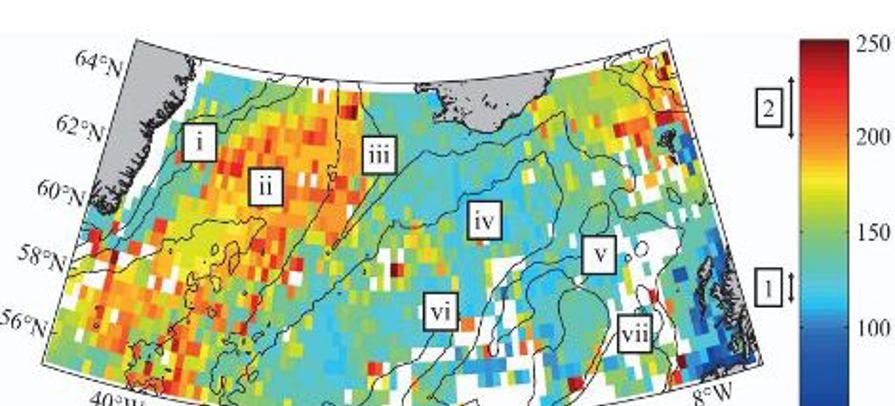Grein um ávirkana hjá jarni á gróður í høvum
Maria Nielsdóttir hevur saman við øðrum grein í nýggjastu útgávuni av tíðarritinum Limnology and Oceanography (Vol 58, Issue 1, 2013). Greinin kallast "Spatial and temporal development of phytoplankton iron stress in relation to bloom dynamics in the high latitude North Atlantic Ocean"
Í stuttum snýr greinin seg um, hvussu metallið og føðsluevnið jarn (Fe) kontrollerar gróðrinum í Íslands- og Irmingarhavinum. Hetta hevur stóra ávirkan á eina av størstu lívfrøðiligu karbon-pumpunum í havinum, sum er ein tíðandi kontroll faktorur fyri CO2 nøgdina í atmosferuni.
Rithøvundarnir eru Ryan-Keogh, Thomas J., Anna I. Macey, Maria C. Nielsdóttir, Michael I. Lucas, Sebastian S. Steigenberger, Mark C. Stinchcombe, Eric P. Achterberg, Thomas S. Bibby, and C. Mark Moore.
Maria Nielsdóttir hevur seinastu trý árini verið í einum post.doc starvi á National Oceanography Centre, University of Southampton, sum hevur verið partvís fíggjað við játtan úr Granskingargrunninum .
Enskur samandráttur
The high-latitude North Atlantic (HLNA) is characterized by a marked seasonal phytoplankton bloom, which removes the majority of surface macronutrients. However, incomplete nitrate depletion is frequently observed during summer in the region, potentially reflecting the seasonal development of an iron (Fe) limited phytoplankton community. In order to investigate the seasonal development and spatial extent of iron stress in the HLNA, nutrient addition experiments were performed during the spring (May) and late summer (July and August) of 2010. Grow-out experiments (48-120 h) confirmed the potential for iron limitation in the region. Short-term (24 h) incubations further enabled high spatial coverage and mapping of phytoplankton physiological responses to iron addition. The difference in the apparent maximal photochemical yield of photosystem II (PSII) (Fv:Fm) between nutrient (iron) amended and control treatments (d(Fv:Fm)) was used as a measure of the relative degree of iron stress. The combined observations indicated variability in the seasonal cycle of iron stress between different regions of the Irminger and Iceland Basins of the HLNA, related to the timing of the annual bloom cycle in contrasting biogeochemical provinces. Phytoplankton iron stress developed during the transition from the pre-bloom to peak bloom conditions in the HLNA and was more severe for larger cells. Subsequently, iron stress was reduced in regions where macronutrients were depleted following the bloom. Iron availability plays a significant role in the biogeochemistry of the HLNA, potentially lowering the efficiency of one of the strongest biological carbon pumps in the ocean.
Greinin kann lesast á ASLO (Krevur hald)
Les um post.doc.verkætlanina hjá Mariu Nielsdóttir í Stuðulsyvirlitinum
